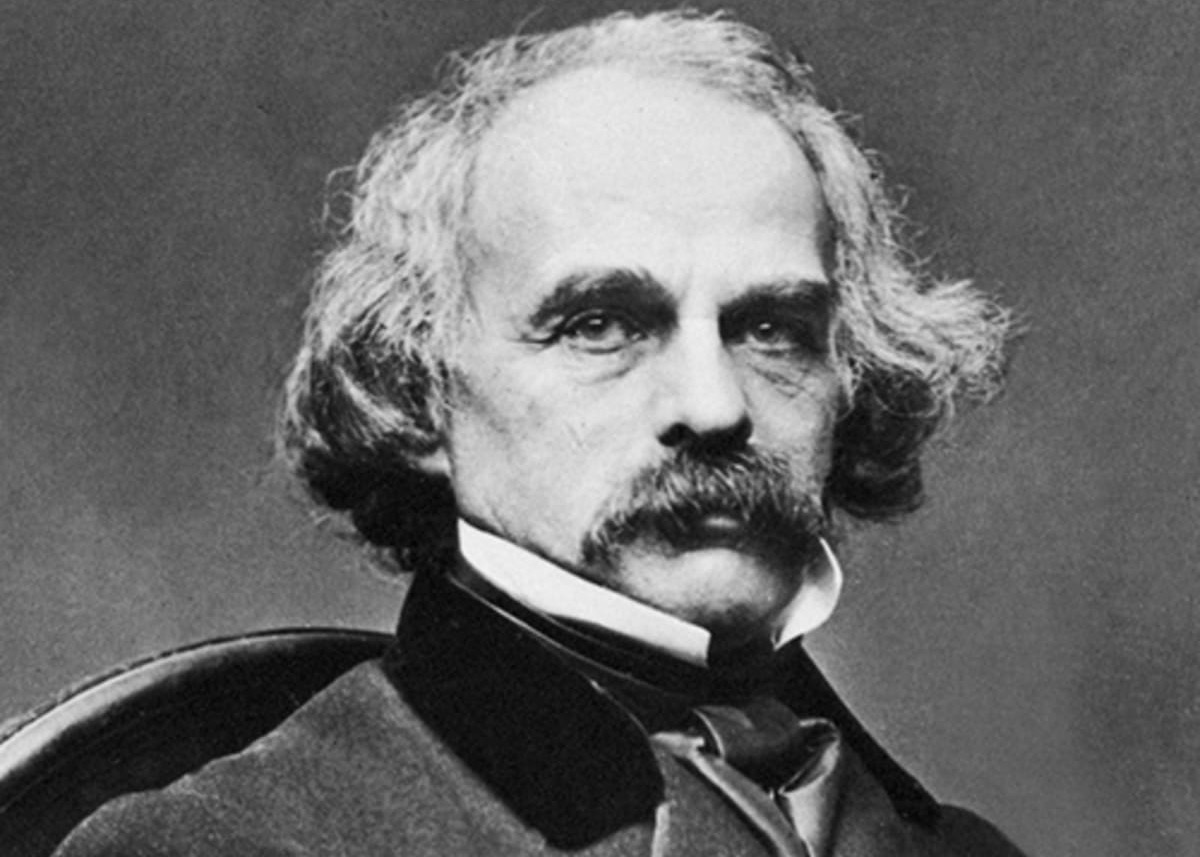Contemporary of fellow transcendentalists Ralph Waldo Emerson, Henry David Thoreau, and Louisa May Alcott, Nathaniel Hawthorne was an American short story writer and novelist who experimented with a broad range of styles and genres. Born in 1804 in Salem, Massachusetts, where one of his most widely read novels, The House of Seven Gables, is set, Hawthorne moved to Concord following his marriage to Sophia Peabody.
The couple rented the Old Manse adjacent to the historic North Bridge, arriving on their wedding day, July 9, 1842. To honor the occasion, colleague Henry David Thoreau gifted the couple a vegetable garden, which Hawthorne described in the preface to Mosses to an Old Manse, a collection of short stories that evoke the pastoral beauty of the property’s landscape.
In 1852, Hawthorne bought The Wayside, two miles down the road from the Old Manse, as a home for Sophia and their three children Una, Julian, and Rose. His third novel, The Blithedale Romance, was published a month later. In the same year he completed Tanglewood Tales as well as a campaign biography for Franklin Pierce, a candidate for U.S. President. A lifelong friend at classmate at Bowdoin College in Maine, President Pierce appointed Hawthorne Consul to Liverpool upon his election the following year. For the next seven years he and his family lived in the U.K. and Europe, returning to The Wayside in 1860.
Shortly thereafter, Hawthorne completed some renovations to the property. He added a second story over the west wing, enclosed the bay porch, moved the barn to the east side of the house, and constructed a three-story tower on the back of the house, naming the top story his “sky parlor.” Here he continued to write romances, some set at The Wayside. These were left unfinished at the time of his death on May 19, 1864.
Hawthorne is buried at Sleepy Hollow Cemetery in Concord. In 2006, the remains of his wife Sophia and daughter Una were brought from England where they had moved after his death and re-interred in the Hawthorne family plot.

